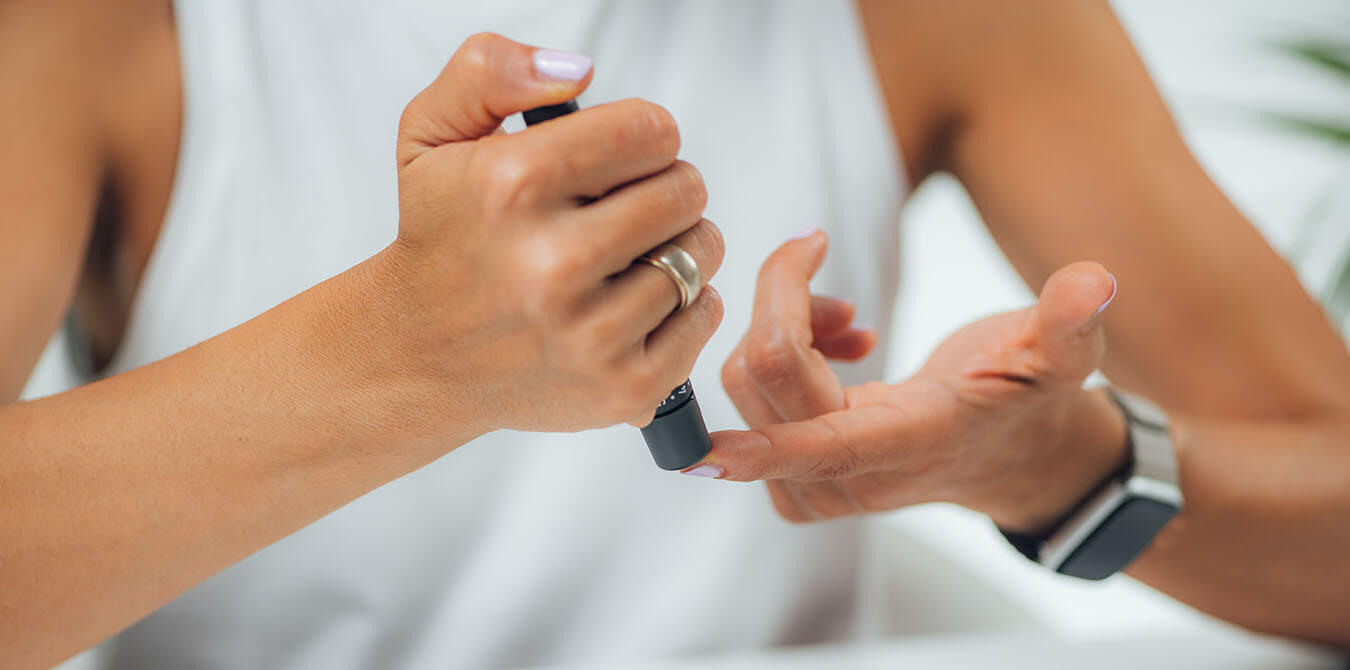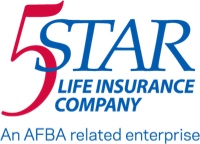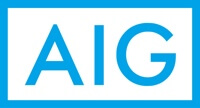Life Insurance for Diabetics


Reviewed by
Grant Desselle
Licensed Insurance Agent


Reviewed by
Grant Desselle
Licensed Insurance Agent
Table of Contents
According to the American Diabetes Association: “It Type 1 diabetes, the body does not produce insulin. The body breaks down the sugars and starches you eat into a simple sugar called glucose, which it uses for energy. Insulin is a hormone that the body needs to get glucose from the bloodstream into the cells of the body.”
While it’s possible to obtain life insurance if you have type 1 diabetes as long as your condition is well-controlled, the underwriting process is more difficult. If you’re approved, you most likely will be rated in a lower health class (“substandard”), which might only mean that your premiums will be higher, or there will be a limit to how much life insurance coverage you are eligible for.
Insurance for people with type 1 and type 2 diabetes is a complex topic with as many variations as the disease symptoms. That can search for life insurance an arduous process for people with diabetes. Dealing with a skilled and knowledgeable provider is essential because each insurance company has its own coverage standards. If you apply to the wrong one and get rejected, the rejection becomes part of your medical record for all other companies to see. That can lead to further rejections that otherwise might not have happened.
That’s just one of many tricky aspects of obtaining coverage for people with diabetes. On this page, we’ll show you what kind of life insurance policies you can expect to find for different types of diabetes, which companies provide the policies, and what kind of payouts the policies offer to your loved ones.
So read on. Even though you may not qualify for the same policy as a healthy person, you probably have more options than you think.
According to the American Diabetes Association: “If you have type 2 diabetes, your body does not use insulin properly. This is called insulin resistance. At first, your pancreas makes extra insulin to make up for it. But, over time, it isn’t able to keep up and can’t make enough insulin to keep your blood glucose at normal levels.”
Type 2 diabetes is also known as “adult-onset diabetes.” It’s easier to get people with type 2 diabetes approved for life insurance coverage than type 1 diabetes. That’s because type 2 diabetes poses a lower risk to insurance companies as long as it’s controlled through medication or changes in health behaviors, there are no additional complications, and a physician monitors the disease. As a result, people with type 2 diabetes can get more affordable rates and better health ratings than those with type 1 diabetes.
According to Babycenter.com: “When you’re pregnant, your body naturally becomes more resistant to insulin so that more glucose is available to nourish your baby. This isn’t a problem for most moms-to-be: When your body needs additional insulin to process excess glucose in the blood, the pancreas secretes more. But if the pancreas can’t keep up with the increased demand for insulin during pregnancy, blood sugar levels rise too high because the cells aren’t using the glucose. This results in gestational diabetes.”
Since gestational diabetes is often a temporary situation involving glucose intolerance during pregnancy, many insurance companies aren’t overly concerned about history. The biggest concern is if diabetes continues after the pregnancy and becomes type 2 diabetes. If there are no additional signs of diabetes post-pregnancy, then obtaining good life insurance rates should not be an issue.
| Best for: | Minimum Age of Diagnosis | Maximum Face Value | |
|---|---|---|---|
| People with type 1 and type 2 diabetes | 50 | $250,000 | |
| People with controlled type 2 diabetes | N/A | $50,000 | |
| People with controlled type 2 diabetes | 50 | $250,000 | |
| People with type 1 or type 2 diabetes | N/A | $50,000 | |
| People with type 1 or type 2 diabetes | N/A | $100,000 | |
| People with controlled type 2 diabetes (no insulin) | 50 | $500,000 | |
| People with type 1 and type 2 diabetes | 30 | $400,000 |
At True Blue, we love life insurance companies that offer affordable rates and quality policies and don’t require medical exams.
One of the biggest mistakes we see is customers overpaying for life insurance coverage because they thought they only had one or two life insurance choices, given their diabetes. They didn’t realize that a diabetes diagnosis still allows for numerous options. Oftentimes people settle for the first option they find. They end up buying a policy that isn’t affordable and may not be the best fit for them.
Qualifying for a no-exam life insurance policy is not complicated. As you begin working with your True Blue personal shopper, it’s important, to be honest about any health or other issues you have so that they can get the best review of the underwriting guidelines of the dozens of no-exam life insurance companies out there.
One of these no medical exam life insurance companies may be just the solution you need to get approved for the coverage you want, even with a diagnosis of diabetes. We work with many different carriers that can provide you life insurance and get you approved quickly. Most carriers will still request medical records and ask you about your current health status. Keep in mind that no-exam policies tend to be a little higher in price because the insurance company absorbs more risk.
Trying to secure a small business loan? Does a divorce decree or custody order require you have life insurance, but you’re finding it hard to get approved with your type 1 or type 2 diabetes? A no medical term life insurance policy will get you the protection you need quickly, without the monotonous process of a paramedical exam in your home or office.
| Best for: | Minimum Age of Diagnosis | Maximum Face Value | |
|---|---|---|---|
| People with controlled type 2 diabetes | Assessed on a case-by-case basis | $500,000 | |
| People with controlled type 1 or type 2 diabetes | Assessed on a case-by-case basis | $20,000,000 | |
| People with controlled type 2 diabetes | Assessed on a case-by-case basis | $10,000,000 | |
| People with controlled type 2 diabetes and some people with type 1 diabetes | 50+ (those with controlled type 2 diabetes can qualify for standard rate class) | $1,000,000+ | |
| People with controlled type 2 diabetes | 30 | Varies based on age |
Some of the best life insurance companies offer both no-exam and fully underwritten policies, but the savings are as varied as the companies themselves. There are times where a fully underwritten policy that requires a medical exam makes sense over a no-exam policy. Fully underwritten policies require a paramedical exam. Your vitals, a blood sample, and a urine sample are taken (the insurance company covers the cost), and the results are sent to the insurance company for review.
Once you purchase the policy and want a lower rate, you might be able to request a new medical underwriting on the anniversary of your policy being in force. It depends on the company. If the new results are better than the original ones, you can ask the company to re-evaluate your results and see if you meet the lower price requirements.
Absolutely! The biggest concerns regarding life insurance for people with type 1 or type 2 diabetes are whether the disease has been controlled for the past 6 to 12 months and if you have any other adverse conditions, such as heart disease, tobacco use, obesity, or high blood pressure.
If your diabetes isn’t controlled, you may have to look at a guaranteed life insurance policy, which often comes with much higher premiums and a lower total death benefit.
Absolutely! The biggest concerns regarding life insurance for people with type 1 or type 2 diabetes are whether the disease has been controlled for the past 6 to 12 months and if you have any other adverse conditions, such as heart disease, tobacco use, obesity, or high blood pressure.
If your diabetes isn’t controlled, you may have to look at a guaranteed life insurance policy, which often comes with much higher premiums and a lower total death benefit.
No medical exam life insurance policies are becoming more popular for people with type 2 diabetes. Although no medical exam is required, you will still be asked questions about your condition. You will also be required to allow your health care providers to provide appropriate medical documentation to the underwriter.
It is important to remember that ANY policy that doesn’t require a medical exam will be more expensive than a traditionally underwritten one.
Honesty and accurate information are vital to this process. If the life insurance company chooses to investigate your overall health history during the contestability period (usually 2 years after the policy is issued) and finds dishonest answers on your application, it can cancel your policy. If you were to die during this period and the insurance company discovered false information (e.g., saying you were not a smoker, but you actually did smoke), it could delay or deny your death benefits.
Life insurance is completely based on risk. People with type 1 diabetics and those with type 2 diabetes who are insulin-dependent are placed in a much higher risk category than people who can control their diabetes through health behavior changes (e.g., better diet, regular visits to a physician, more exercise) and oral medication.
As a result of the overall health rating established by the insurance company’s underwriting guidelines, the types of policies available may be limited, and the premiums are usually higher. In situations involving a diabetes diagnosis, it’s vital to work with an experienced agent who can help you find the best coverage that meets your needs at a price you can afford.
Finding the best insurance for someone with diabetes can be a challenge for the average life insurance agent. However, we have a lot of experience finding the best insurance companies specializing in high-risk health and other risk factors, like diabetes.
The better controlled your diabetes is, the more affordable your life insurance coverage will be, especially if you have a positive health history. At True Blue, we shop around and access dozens of life insurance companies to find the most competitive coverage for your particular health condition.
After your application is complete, the underwriting process begins. At the beginning of the underwriting process, there will often be an interview in which the underwriter will ask you about the following:
Underwriters will request medical records from your health care providers for most policy applications and begin reviewing the information to assign a class and rating for you properly.
For many insurance companies, the ideal diabetic candidate:
While this is what many underwriters find ideal, slight variations will not automatically deny you access to affordable coverage. The age at diagnosis and A1C levels are major areas they look at when they begin underwriting your policy.
How much coverage you qualify for depends greatly on the company and the type of policy you are seeking. A no medical exam life insurance policy (one of the best options for people with type 2 diabetics) will have more options for higher dollar coverage. But, a guaranteed issue policy may limit you to $10k in coverage.
The biggest issues to contend with in this situation are how well your diabetes is controlled, how old you were when your diabetes was diagnosed, and how underwriting will see you as a risk.
Ideally, you want to talk with an independent agency like True Blue regarding this type of coverage. Why? Because non-independent (or “captive”) agents at some of the bigger names aren’t as likely to be able to offer a policy that suits someone with diabetes or other high-risk health classifications.
They are limited to offering only one company’s products. Finding an independent agent who is experienced and specializes in this area is the key to finding the best policy at the best price, without having to settle for something less than what you need.
Life insurance companies treat people with type 1 diabetes (or anyone with diabetes who is insulin-dependent) a little unfairly when it comes to affordable life insurance. Many people who live with this condition don’t have adequate coverage because they believe it’s too expensive. While it can be challenging, it isn’t impossible to get good coverage. That’s why it’s important to work with experts like True Blue to help navigate the ins and outs of getting approval.
The most important thing to realize is that life insurance for a person with type 1 diabetes will be more expensive than coverage for people with type 2 diabetes and those without diabetes because of how the insurance industry views type 1 diabetes and its overall risk underwriting process. Type 1 diabetes is a disease, and the prices are set accordingly. Some companies are willing to take more risks than others and will be more flexible in their underwriting. But, unless you’re working with a trained expert in this area, how are you going to know which of the 100+ life insurance companies are the best for people with diabetes?
Your overall condition and the way you manage your health will make or break your chances of getting coverage. Whether or not you follow your doctor’s advice regarding the proper management of your disease is entirely your choice, but the better you handle your health, the better your chances of getting a policy that makes the most sense for you.
In our culture, where TV and video constantly beckon, and fast food offers an endless variety of unhealthy options, it’s all too easy to get diabetes. Heck, even the relatively buff Tom Hanks has it.
Fortunately, the first stage of the disease is manageable without medicine. As Hanks said, “You’ve just got to lose weight and exercise a lot and change everything you eat and never have any fun whatsoever.”
But it does feel good to be slim and fit, even if getting there isn’t much fun. It’s also comforting to know that you have a wide variety of reasonably priced life insurance options.
Oftentimes, you can get a standard-rate policy if you have a nurse come to your home and do a medical exam. If you qualify for a medical-exam plan, your rate will be much cheaper, and the policy value can be higher.
If you don’t want the exam, American National, Assurity, and Sagicor will still provide coverage. Sagicore is the fastest and can usually get you an answer on coverage within 48 hours. American National and Assurity, write to your doctor to get records, which takes 4 to 5 weeks.
For no-medical insurance providers, premiums will cost anywhere from 10% to 50% more than standard. But, for people who are in a hurry or don’t want someone asking them questions and drawing their blood, it may be worth the difference.
If you’re taking oral medication for diabetes, your life insurance coverage will be determined by your risk factors. There will be a strong emphasis on the results of your A1C test, also known as a hemoglobin A1c, HbA1c, or glycohemoglobin test. This is the primary test for diabetes management, and it measures blood glucose levels over the previous 3 months.
To be eligible for standard rates, you need good A1C results. You can’t be overweight, smoke, or show symptoms of diabetic damage, such as kidney damage, circulatory problems, or eye problems. You can still obtain coverage if you don’t meet that standard, though rates are generally 50% higher.
Policies vary considerably.
Some companies don’t like it if you’re overweight. Others turn you away if you have nerve damage. You have to look at the whole package, with an emphasis on the A1C level, according to Gerry Scholz, national marketing director for True Blue and an agent with 25 years of experience. Table 1 below shows sample rates for no-exam term life insurance for people with diabetes who control the disease through diet and exercise or pills.
If you depend on insulin to control your diabetes, getting term life insurance is very tough. Fortunately, it’s not your only option. If you do want a term, acceptance depends on your risk factors. You probably have many them at this stage — even if you aren’t aware of it.
Obtaining term coverage requires a medical exam, and that’s usually not a good thing for those who are insulin-dependent.
“About 90% of the time, you’re wasting your time if you take a medical exam,” Scholz said. “They’ll almost always find risk factors — and if they do, you’re not going to get issued.”
If you are eligible, rates are lower, and you can get much more coverage. But most insurers want to see an A1C level of 7.0 or less, although a few will go as high as 8.5. The best rate is about double the cost of standard insurance. Our experience has shown that Banner and American General are the best companies to work with if you try to go this route.
Another consideration if you apply for term life: The insurance company might discover risk factors you didn’t know you had, and you could be declined. Once the company’s investigation results are on the record, they’re available to no-exam insurers, who can use them against you. For that reason, we recommend that you get a no medical exam policy first. That way, you’re covered no matter what, and you can always switch to a term policy later if you qualify.
What if you don’t qualify for the term or know you couldn’t possibly?
Don’t despair. Whole life insurance without a medical exam is still available to you. It comes in two basic flavors: “immediate death benefit” plans, which provide full benefits to your loved ones upon your death no matter how long you’ve owned the policy, and “graded benefit” plans, which offer partial payments if you’ve held the policy for less than 2 or 3 years and provide full payment if you’ve held it longer.
As stated above, gestational diabetes occurs during pregnancy and is often a temporary issue that resolves as the body recovers after childbirth. On occasion, gestational diabetes can convert to type 2 diabetes, but this is the exception and not the rule.
This type of diabetes does make you a higher risk for developing type 2 diabetes later in life, which makes it vital that you maintain healthy behaviors and follow up routinely with your health care providers to ensure that you’re adhering to all preventive measures.
| $250,000 – 20-year term cost per month (50-year-old male in California) | Maximum Age of Issue | Maximum Face Value | Underwriting Approval Timeline | |
|---|---|---|---|---|
 | $172.88 per month | 18 – 65 | $300,000 | 1 – 10 days |
 | $142.98 per month | 18 – 65 | $500,000 | 1 – 15 days |
 | $88.77 per month | 18 – 65 | $250,000 | 10 – 30 days |
 | $144.67 per month ($100,000 in coverage) | 18 – 65 | $100,000 | 1 day |
For no medical exam insurance companies, premiums will cost you anywhere from 10% to 50% more than standard. People who are in a hurry or don’t want someone to ask them questions and draw their blood may be worth the difference.
| $10,000-Level Whole Life cost per month (50-year-old male) | Maximum Age of Issue | Maximum Face Value | Underwriting Approval Timeline | |
|---|---|---|---|---|
 | $28.82 per month | 1 – 80 | $50,000 | 7 – 14 days |
 | $29.16 per month | 45 – 85 | $40,000 | 3 – 21 days |
 | $31.02 per month | 20 – 80 | $50,000 | 5 – 15 days |
Many companies offer no-exam whole life plans that provide immediate death benefits for people with diabetes who are not insulin-dependent. Availability and price are determined by your other risk factors (e.g., excessive weight, heart surgery within the previous 2 years, smoking, mental health treatment, or COPD) and how severe they are. Each company has its own criteria.
| $10,000 – Graded Benefit cost per month (50-year-old male in California) | Maximum Age of Issue | Maximum Face Value | Graded Benefit Period | Underwriting Approval Timeline | |
|---|---|---|---|---|---|
 | $46.22 per month | 25 – 80 | $25,000 | Year 1: Return of premium PLUS 12%
Year 2: Return of premium PLUS 24% | 2 – 3 days |
 | $42.40 per month | 40 – 80 | $35,000 | Year 1: 40% of death benefit
Year 2: 75% of death benefit | 2 – 3 days |
 | $46.15 per month | 45 – 80 | $20,000 | Year 1: Return of premium PLUS 10%
Year 2: Return of premium PLUS 10% | 3 – 21 days |
Graded/modified benefit policies usually have a waiting period of 24 to 36 months before the entire death benefit can be paid to a beneficiary. If a health-related death occurs before the graded benefit period ends, the policy will only pay a percentage of the death benefit. Exact benefit percentages vary from different carriers.
Accidental and non-health-related deaths pay 100% of the death benefit coverage amount to beneficiaries on day 1.
| $10,000 – Guaranteed Issue cost per month (50-year-old male in California) | Maximum Age of Issue | Maximum Face Value | Graded Benefit Period | Underwriting Approval Timeline | |
|---|---|---|---|---|---|
 | $38.41 per month | 50 – 80 | $25,000 | Year 1: Return of premium PLUS 10%
Year 2: Return of premium PLUS 10% | 2 – 3 days |
 | $51.92 per month | 50 – 85 | $25,000 | Year 1: Return of premium PLUS 10%
Year 2: Return of premium PLUS 10% | 2 – 3 days |
While they’re not the first choice for our clients, guaranteed issue policies provide a bit of final expense coverage and do not require a medical exam. They also offer coverage for accidental death (as opposed to death from a medical condition) from day 1, and you don’t have to answer any health-related questions to get this type of policy. It’s important to remember that you could end up paying more in premiums for a guaranteed issue policy than what the overall death benefit can be.
As you begin applying for life insurance, the underwriters will want to understand better the severity of your condition, your overall treatment plan, and what type of policy you are requesting. Because of the health risk diabetes presents, underwriters will ask more direct questions about your condition and overall health to make the most informed decision possible.
The more prepared you are ahead of time for the questions the application requires, the quicker the process can be for obtaining coverage. Be prepared to answer the following:
Organization of your medical information during this stage of the process will also help the life insurance underwriters quickly review the documentation they need to decide. Be sure also to have the following ready:
After talking with one of our life insurance personal shoppers at True Blue and locating the best solution that fits your needs, submitting an application is a quick and easy step in the process.
Depending on the type of policy, a paramedical exam may be required. These types of exams usually take about 30 minutes. They’ll take blood and urine samples, as well as your blood pressure and a cardiac monitor reading. The underwriters will review your exam results to understand your overall health and potential health risks. This helps them to assign a health class and premium best. In some cases, underwriting will also request medical information from your primary physician and any other specialists you’ve visited or a full physical exam (typically requested for policies over $1M in coverage).
Another option is a no-medical exam policy, which will have a higher premium but doesn’t require any medical exam type. Instead, the underwriter requests medical documentation from your health care providers and makes an overall determination of health class and rating based on the information provided. In general, True Blue finds that these policies work best for many of our clients who have diabetes.
After reviewing all of the information, the underwriters will decide on your coverage. While not all insurance companies are the same, most will have three categories of insureds: standard, substandard, and preferred.
Underwriting will take all of the information it has obtained, and review is based on internal underwriting guidelines currently in place at the company you chose. Every company is different when it comes to underwriting. There are typically about 12 different health classes (some have more, some have less) and 3 main categories that classify overall health risk.
Occasionally, people with diabetes will be declined altogether for an underwritten policy based on their medical history and the amount of risk they bring to the company. In these situations, a guaranteed issue policy may make sense.
Since a guaranteed issue means that the policy issue is guaranteed without any underwriting, be aware that the premiums can be 2 to 3 times higher than a traditionally underwritten policy. For this reason, this option may not make financial sense — it just depends on your specific situation. It’s not uncommon for premiums paid into the policy to exceed the face value of the policy. That means you could end up paying more for coverage than the policy would payout if you died. For some people with diabetes who need life insurance, this may be the only route.
Once the underwriting process is completed and you are approved, the insurance company will send your policy. Many companies are moving to digital delivery via email. The policy will reflect your total premium and the health class underwriting assigned to you. As long as the premiums are paid, and the policy is uncontested, the insurance company cannot cancel your coverage.
We are here to help! Enter your information below and we will respond with all the answers you need to make the best decision.